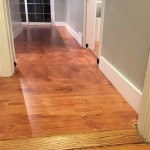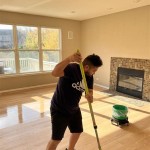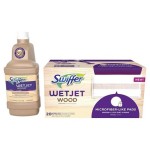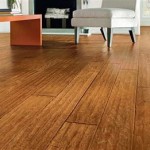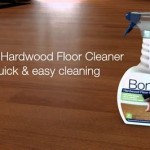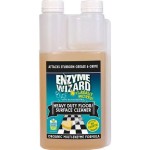Steam Mop Laminate Wood Floor: A Comprehensive Guide
Laminate flooring offers an attractive and durable alternative to hardwood, often chosen for its affordability and ease of installation. Maintaining the cleanliness of laminate floors is crucial to preserving their appearance and longevity. Steam mops have gained popularity as cleaning tools, but their application to laminate flooring requires careful consideration. This article provides a detailed examination of using steam mops on laminate floors, addressing potential benefits, risks, and best practices.
The composition of laminate flooring is central to understanding how it reacts to different cleaning methods. Typically, laminate consists of several layers: a backing layer providing stability, a core layer made of high-density fiberboard (HDF) or medium-density fiberboard (MDF), a decorative layer that gives the floor its wood-like appearance, and a wear layer protecting the surface from scratches and wear. The core layer's susceptibility to moisture is the primary concern when using steam mops.
Steam mops utilize heated water to generate steam, which is then applied to the floor surface to loosen dirt and grime. The heat and moisture combination is known for its effectiveness in sanitizing and cleaning various surfaces. However, the high temperature and moisture content can pose challenges when applied to laminate.
Understanding the Risks of Steam Mops on Laminate
The primary risk associated with using steam mops on laminate flooring is water penetration. The seams between laminate planks are potential entry points for moisture. If steam, or rather, condensed steam (water), seeps into the core layer (HDF or MDF), it can cause the material to swell, warp, and delaminate. Over time, this damage can compromise the structural integrity and appearance of the flooring.
Another point to consider is the wear layer. While designed to protect against scratches, the wear layer might not be impervious to the prolonged exposure to high heat, particularly if it is a lower-quality laminate. Excessive heat, even without significant water penetration, could potentially weaken or distort the wear layer over extended use, leading to a dull or hazy appearance.
It's important to acknowledge that not all laminate flooring is created equal. Some manufacturers produce water-resistant or even waterproof laminate products. These floors are designed to withstand higher levels of moisture exposure. However, even with these types of laminate, caution is advised, and the manufacturer's recommendations should always be the ultimate deciding factor.
Assessing Your Laminate Floor and Steam Mop
Before using a steam mop on laminate flooring, several preliminary steps are necessary. First and foremost, consult the flooring manufacturer's warranty and care instructions. Specifically, look for any explicit prohibitions or recommendations regarding the use of steam mops. Using a steam mop against the manufacturer's advice could void the warranty.
Examine the condition of the laminate flooring. If there are existing gaps between planks or signs of previous water damage, using a steam mop is not recommended. These pre-existing vulnerabilities increase the risk of further damage from moisture penetration. Also, check the age and quality of the laminate. Older, lower-quality laminate is generally more susceptible to damage than newer, higher-quality products.
Evaluate the steam mop itself. Look for models with adjustable steam settings. A low steam setting is essential for minimizing moisture exposure on laminate floors. The steam mop should also have a microfiber pad designed to effectively trap dirt and absorb excess moisture. A dirty or worn-out pad can spread dirt and water across the floor, increasing the risk of damage.
Best Practices for Steam Mopping Laminate (If Approved)
If the manufacturer's instructions permit the use of a steam mop on your laminate flooring, and you have carefully assessed the condition of your floor and steam mop, the following best practices should be followed to minimize the risk of damage:
1. Thoroughly Sweep or Vacuum First: Before steam mopping, remove all loose dirt, debris, and pet hair from the floor. Steam mopping a dirty floor will only spread the grime around, potentially scratching the surface. A vacuum with a soft brush attachment is ideal for this step.
2. Use the Lowest Steam Setting: Opt for the lowest steam setting available on the steam mop. The goal is to use just enough steam to loosen dirt without saturating the floor. If the mop does not have adjustable settings, consider damp mopping with a regular mop instead.
3. Move the Mop Quickly and Consistently: Do not hold the steam mop in one spot for an extended period. Keep the mop moving continuously across the floor to prevent excessive moisture buildup in any single area. Overlapping slightly with each pass helps ensure complete coverage.
4. Use a Dry Microfiber Pad: Ensure the microfiber pad is clean and only slightly damp. Avoid using a soaked or dripping pad. The pad should absorb excess moisture as you clean. Consider having a spare pad on hand to switch out if the first one becomes too saturated.
5. Immediately Dry Any Standing Water: If any water pools on the surface of the laminate after steam mopping, immediately wipe it up with a clean, dry cloth. Preventing water from sitting on the floor is crucial to minimizing the risk of damage.
6. Ventilate the Room: Open windows or turn on a fan to improve air circulation and help the floor dry quickly. Proper ventilation reduces the amount of time the floor remains damp.
7. Spot Test in an Inconspicuous Area: Before steam mopping the entire floor, perform a spot test in an out-of-the-way area, such as under a piece of furniture. This will allow you to assess the floor's reaction to the steam and heat without risking visible damage.
8. Frequency of Steam Mopping: Limit the frequency of steam mopping. Overuse can lead to gradual moisture damage, even when following best practices. For most laminate floors, steam mopping (if approved) should be limited to occasional deep cleaning, rather than a regular maintenance routine.
Alternative Cleaning Methods for Laminate Flooring
Even if a steam mop is deemed acceptable for your laminate flooring, alternative cleaning methods can be equally effective and potentially safer. Damp mopping with a traditional mop and a laminate-specific cleaner is a widely recommended approach. These cleaners are formulated to be pH-neutral and non-abrasive, minimizing the risk of damage to the floor's finish.
To damp mop, use a microfiber mop and a bucket of warm water mixed with the appropriate amount of laminate floor cleaner. Wring out the mop thoroughly to ensure it is only damp, not wet. Mop the floor in sections, overlapping each pass, and immediately wipe up any excess water with a clean, dry cloth.
Another option is to use a specialized laminate floor cleaning kit, which typically includes a spray bottle of cleaner and a microfiber mop. Spray the cleaner directly onto the mop head, not the floor, and then mop as usual. This method helps control the amount of moisture applied to the floor.
For everyday maintenance, simply sweeping or vacuuming the floor regularly is often sufficient to remove loose dirt and debris. Preventing dirt buildup can reduce the need for more intensive cleaning methods.
Addressing Common Concerns and Misconceptions
A common misconception is that all laminate floors are the same and can be cleaned using the same methods. As mentioned earlier, laminate floors vary in quality, construction, and water resistance. Always refer to the manufacturer's instructions for specific cleaning recommendations.
Another concern is the use of harsh chemicals on laminate flooring. Avoid using abrasive cleaners, bleach, ammonia, or vinegar, as these can damage the wear layer and dull the finish. Stick to pH-neutral cleaners specifically designed for laminate floors.
Some individuals believe that steam cleaning is inherently superior to other cleaning methods. While steam can effectively sanitize surfaces, it poses a higher risk to laminate flooring due to the potential for moisture damage. The benefits of steam cleaning must be carefully weighed against the potential risks.
It is also important to distinguish between laminate flooring and hardwood flooring. Hardwood floors respond differently to steam cleaning, and the recommendations for each type of flooring are distinct. Confusing the two can lead to improper cleaning practices and damage.
In conclusion, while steam mops can be effective cleaning tools, their suitability for laminate flooring depends on several factors, including the manufacturer's recommendations, the floor's condition, and the steam mop's settings. If steam mopping is deemed acceptable, following best practices is crucial to minimize the risk of moisture damage. Alternative cleaning methods, such as damp mopping with a laminate-specific cleaner, offer a safer and equally effective way to maintain the cleanliness and appearance of laminate floors.

Can You Damage Your Floor With A Steam Mop

Can You Use A Steam Mop On Hardwood Risky Flooring Tips Reallyfloors America S Est

How To Clean Laminate Floors The Home

7 Best Steam Mops To Clean And Sanitize Floors 2025

We Used A Steam Mop On Laminate Floors Here S What Noticed Cleaning Without Chemicals

Choosing And Using The Best Steam Cleaners For Wood Hard Floors Mr Sander

Can You Use Steam Mop On Laminate Floors

Can You Use A Steam Mop On Laminate Floors Chestnut Flooring

Are Steam Mops Safe For Timber Floors Electrodry Blogs

Floorcare Range Kärcher Ireland
